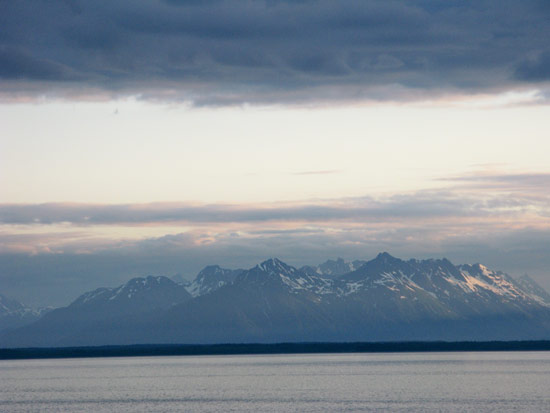
There is in every child-
hood imagination a dream
mountain.
Sometimes there is snow
on top. Sometimes the peak
is hidden by the clouds
or mist.
Sometimes it is just a bald
granite rock. In mine, there
is a shimmering light,
a distant inaccessibility,
a mystery, so that as
in the deepest meditation,
if I entered
it, I would be stepping
into emptiness,
into a frequency
so soft,
I would dissolve
in the arms
of the Great Mother
of all.
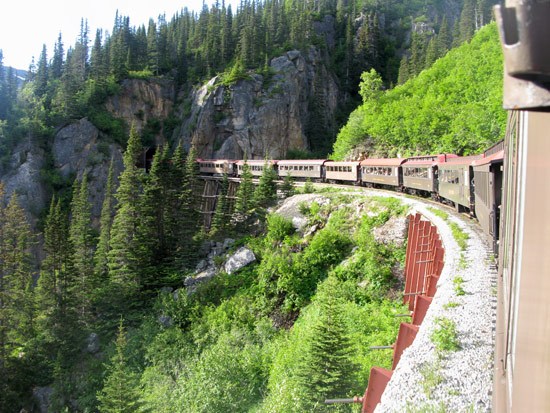
There were no tunnels
in my time. Nobody
blasted through
the mountain
with machines
or exploded
dynamites to open
a road. The trail
circled the boulders
and the rocks,
and where it could
be done, spared
the trees that stood
in the way. The tunnels
were the caverns
that were there
from who knows when.
We went inside
with a torch
and heard the wings
of the bats, smelled
their home,
felt the flow
of a hidden spring.
When the strangers
came looking
for gold, they
followed a straight
line to their goal,
lighted dynamites
in the thick granite
and blasted
a whole mountain
side.
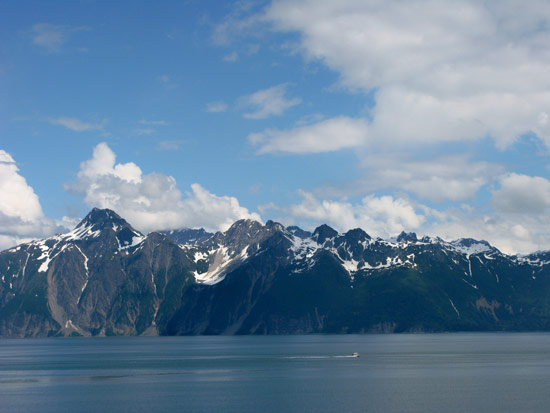
You get up from your meditation
in the morning, open the curtain,
go outside your cabin, and
expecting darkness, find
this sea- and mountain-scape
looming in the distance. What
it triggers is part awe and
part humility and part gratitude.
You know you are lucky
to be there before it disappeared
from your sight or from
the earth. Such fragile
scenes do not last: it was there
thousands of years ago and now
the glacier has melted,
“retreated” back, diminished,
and is now just a shadow
of the past, and we can
not even imagine what
it looked like when its
history began. You take
a child to this place
to teach her the lessons
of nature and life, to learn how
to hold on to this beauty,
gently with her hands,
“while it is still there.” How
many of the landmarks
of our childhood are
gone? The old ricefield
or woodland has been
levelled to make way
for a warehouse
or housing development.
On the lot of the historic moviehouse stands
a skyscraper. Everything
is there for just a moment
and then disappears
from our sight.
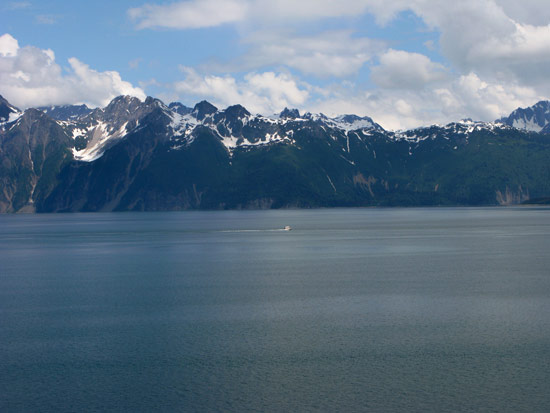
The distant boat leaves
a white ribbon on its trail.
You aim the camera and shoot
sometimes a little too late,
sometimes a little too fast.
While looking through
the viewfinder, you
hope for the elements
of the scene to come together.
But the clouds and the boat
are both moving according
to their own pace, they do not
wait. Nothing
you can do, except press
and shoot, hoping you’ll capture
what is called the Moment,
that split-second experience
or image when everything
stands still and sometimes
if you are lucky, you are gifted
with an epiphany that is beyond
understanding,
beyond description.
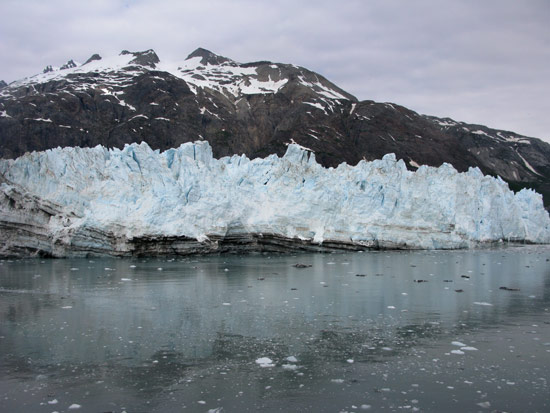
The glaciers have been there
for millennia. Yet within
the last hundred years, they
have been retreating, have retreated,
more than the millennia before.
The planet has changed more
within the last
century than ever before.
What shift has our sun
taken as the earth
wobbled on its path?
Technology and the pollution,
and greed have also left
their ugly mark
on our world. And we,
the custodian of the earth,
still don’t realize what
we have done to it,
what we can do now.
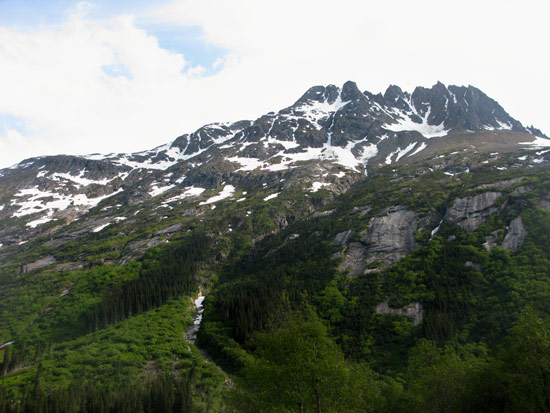
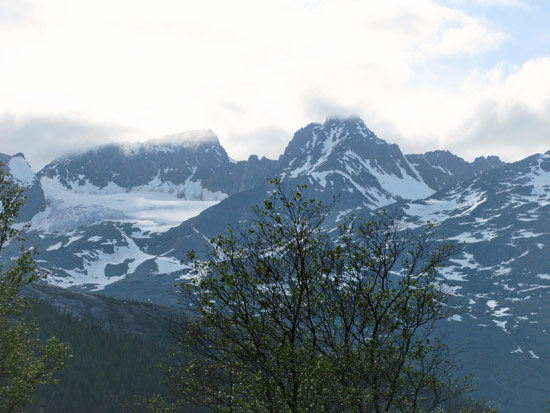
It was on another train
somewhere in China.
Summer of 1983. I had
a glimpse of mountains,
ricefields, small villages,
caves on clay cliffs,
peasants hoeing
the ground,
and there was a quick
chance to shoot a dreamscape:
a mountain in the mist.
The camera, an SLR,
had to be adjusted
for speed and depth of field
and focus and there was
no time to compose.
It was an old Asahi
Pentax from the 60s
my brother gave me.
With a stationary object
like a building
or a flower,
you had time
to compose. But when
the subject was
in motion or
you were on a moving train,
would
the aperture catch
that split-second
image you wanted?
If you did not click,
the opportunity was
lost, so were the cloud
patterns over the top,
the angle, the colors.
It was only
an instant,
a thin slice of
the present
that flashed
into life
and was gone.
Where was I at the time
almost 30 years ago?
Three days and 2 nights
on a train between Shanghai
and Cheng-du
somewhere
in the hinterlands, crossing
territory that had no name.
Here in Alaska
many of the mountains
are nameless, too,
except perhaps
to a tribe,
and like dreams, they pass
in one’s vision
and are gone.
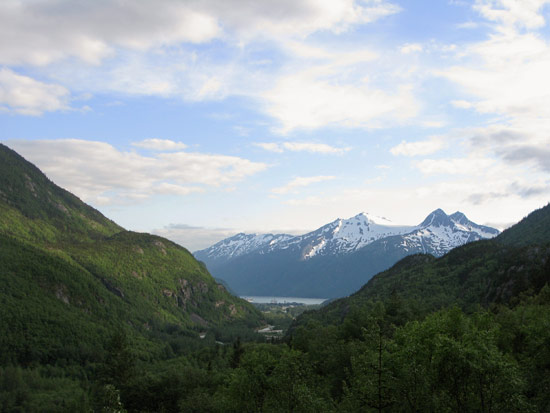
It was like a dream city
from the train as it must
have been to many
during the Gold Rush.
There were diamonds, too,
and jade and minerals.
How extract
the stones and metals
with machines,
chemicals,
and explosives.
Even now, we can see
the jewelry outlets
side by side
on the strip
of road
running from
the ship. A town
beckoning tourists
to buy trinkets, fishing
equipment
and camping gears
while up in the mountain
forests are being
cut down and
prospectors
are diverting
rivers and changing
the landscape
forever.
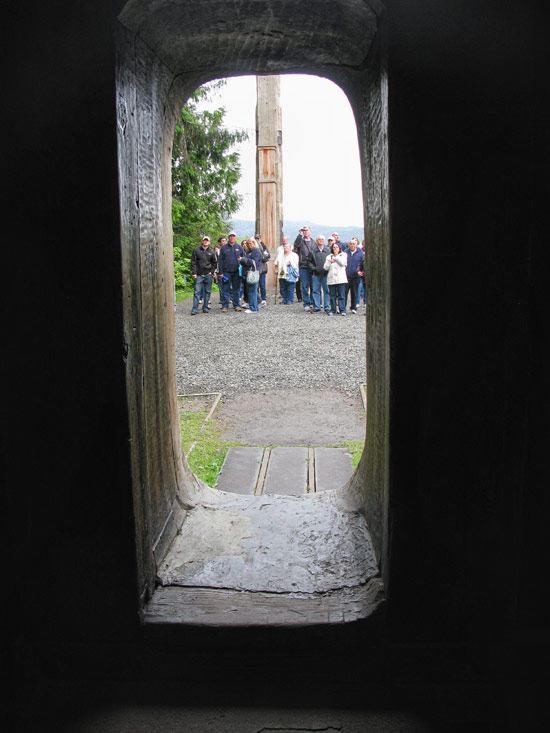
Without opening
her eyes, she knows from
the sounds
around her
how the day
will be. The color
of the sky
and clouds,
what school of fish
enter the bay,
the scent of strangers
coming around
with muskets.
When the child woke up today,
she looked through the door
that’s always open
to life,
and saw the woods
and the lake outside,
heard the geese
and the moose,
the splash of the halibut,
sometimes
the song
of the whales,
smelled the sea salt
and the pine,
the world
of Mother
Earth
all etched
on her mind.
That world
is gone now.
The empty clan house
still carries the smell
of the hunt, the fish
grilling on the fire,
and the lost voices
of the ancestors,
the stories
told and re-told
in chants
and totem poles.
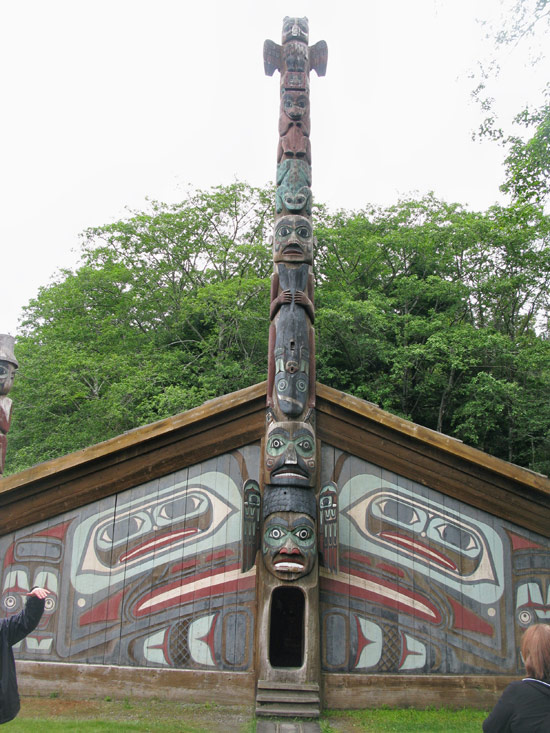
“We did not borrow this land from our ancestors;
we borrow it from our children.” Haida Indian
Saying
Where the clan lived
is empty now. Enter
the open
door,
see a totem
on the opposite wall
first, and then dried skin,
weapons, snow shoes,
fishing gear,
blankets.A circle of stones
in the center for family meals.
Where did they go?
Where is the tribe
that told stories
with totems
and chants by the ancestral
fire, where
are they
who fished the waters,
held the sacred
halibut and the thunder-
bird in reverence,
and the clouds
and sky,
in trust
for
the children?

When you are young,
it is exhilarating to feel
the wind
and the chill,
as the train goes up
the mountain and
you look down the cliff
at the river, the white foam,
the waterfall,
the mist rising, and ahead,
snow-capped peaks. Always,
in your dreams, you can see
animals there, ferocious bears
and colorful snakes, and strange birds,
and giant tigers and dragons
and phoenixes.
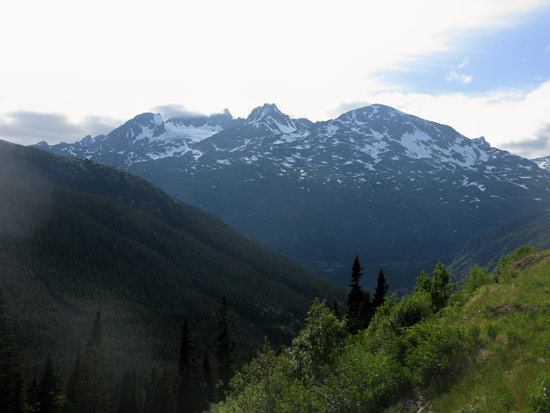
The mountain brought back
a time in my hometown:
A child of 8 went up
the mountain, whispered
bari-bari Apu to honor
the presence of its spirit, sat
on a rock and, breathless, looked
at the landscape below.
There was Ingkong Poli’s
farm: mango trees, tomatoes,
eggplants, okra. And the
ricefields green now but
turning golden with harvest.
There’s the dam where
cousins would swim
in the brown water
and pick kangkong
leaves and balibid snails
for lunch. When you
are a kid, you have
to hunt and forage to survive
on wild plants, bamboo shoots,
catch and dress the frogs
and the birds
or the elusive iguana
that hides in the woods
and cook rice
in a length
of green bamboo
tube.
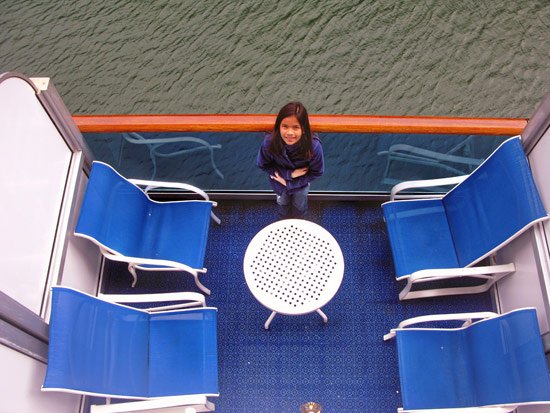
LOOKING AT AVA
When I was 10,
like you, a dragon child
but born in 1940,
my world was
a small town
bordered by
a mountain
range on one side
and the great plains
on the other.
There was no
library or movie
house, no phones,
no hobby shops.
You carved your own
slingshot, or sword,
played the ancient
games,
and lived a life
demarcated
by family and tribe,
and grandfather’s
farm, a school
to which you walked
barefoot or with clogs.
How different it is
now: to travel
to places the ancestors
did not know, to learn
about the earth
and the stars
with the touch
of a button,
breathe the startling
journey
and see new
vistas far
from home,
ride a cruise ship
the size of a village,
to reach beyond
boundaries,
to link
oneself
to a universe
of forests, water,
glaciers,
valleys
and mountains,
and embrace the world
with
your body,
spirit and mind.
Wonderful pictures and stories Rene!!
Rene–
Thanks for sharing the photos and poems. They are lovely. They made me reflect. One in particular made me think and inspired a poetic response. You wrote:
“There is in every child-
hood imagination a dream
mountain.
Sometimes there is snow
on top. Sometimes the peak
is hidden by the clouds
or mist.
Sometimes it is just a bald
granite rock.”
My reply:
I wonder if it is true.
Do people born on plains
Flat and wide
Dream of mountains?
Or instead do they
dream of the horizon
Ever beyond one’s grasp?
Thanks for making me wonder. Glad you had a lovely trip,
Mike
Hi Mike,
I like to believe that even people who are “born on plains flat and wide” have visions of a dream mountain. They may not see a mountain in the horizon, but beyond the endless frontiers, there is surely a mysterious mountain, a promontory, awaiting their grasp or eyes. A mountain does not have to be something material or concrete, it can be an imaginary oasis where a child’s fantasy finds refuge, joy, shelter and completion. I guess I am just an incurable romantic!
Rene
Hi Karen,
Thank you. Nothing to it really! These modern digital cameras can do everything. You do not even have to focus and adjust the speed or the aperture. But the stories are different: they have to be written and composed … and first and above all, they have to be lived.
Hi Papa,
You really have lots of feeling and thinking on your article.I can feel that..
If I have chance, I also will take time to this city-Alaska..
Thanks. I hope you enjoyed the writings and the photos.